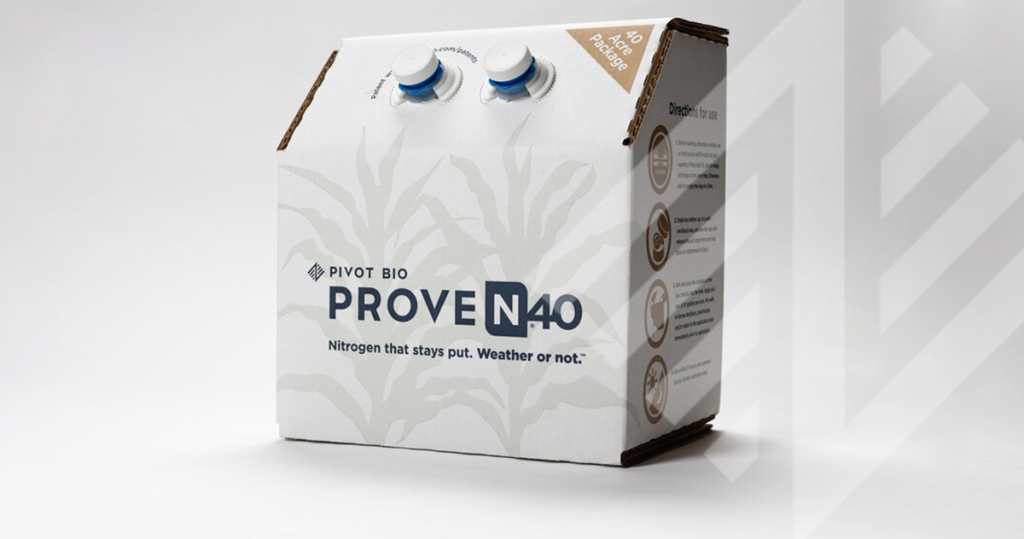Optimizing Nitrogen with Microbes

No one is more motivated to manage nitrogen fertilizer than a farmer. With fertilizer accounting for nearly one-fifth of U.S. farm cash costs, and over a third of operating costs for corn and wheat, any nitrogen that’s not taken up by the crop and lost to leaching or denitrification is money down the drain.
Unfortunately, managing synthetic nitrogen is not a perfect science, despite advances in precision management, stabilizers, and adherence to the 4Rs of nutrient management. While nitrogen is the cornerstone of a robust agronomic practice, by its nature, synthetic nitrogen is a “leaky” system, and Mother Nature doesn’t help.
How does weather impact nitrogen loss?
Because synthetic nitrogen is applied to and stored in the soil, over half of applied nitrogen is lost from weather-related events. For example:
- Microorganisms in the soil convert fertilizer nitrogen into nitrate twice as fast with each 10°F rise in temperature.
- Soil nitrogen and applied nitrogen from fertilizer, once converted to nitrate-N, is more prone to loss in warm and humid, higher rainfall environments (those with +25 inches rain/year), but ammonia volatilization can even occur when urea is applied to wet soil in colder temperatures or snowpack.
To compensate, many farmers are left with one option – apply synthetic nitrogen fertilizer in enough excess that the crop is guaranteed to have access to the nutrient throughout the growing season.
Why is it bad to apply excess synthetic nitrogen?
It’s estimated that farmers lose an estimated $200 billion each year in lost nitrogen. On top of the tremendous financial cost, the strategy of over-application has other implications:
- Too much nitrogen can cause leaf scorch, with the excess fertilizer burning roots and tender new growth. Applying synthetic nitrogen fertilizer in excess can also mean changes to the pH and salinity of the soil, making it harder for a grower to maximize their yield.
- Synthetic nitrogen fertilizer lost to the environment is a potent pollutant, leading to aquatic dead zones, algae blooms and polluted drinking water.
- Excess N is also released as nitrous oxide – a greenhouse gas with 256x the impact of CO₂.
Why is Pivot Bio PROVEN® better than synthetic fertilizer?
Pivot Bio PROVEN® makes the conversation about optimum nitrogen possible. Nitrogen-fixing microbes for cereal crops allow farmers to tailor their nitrogen plan by providing daily nitrogen to the plant that weather cannot impact. That means that nitrogen is available during critical growth stages, regardless of what Mother Nature throws at the field. That consistency gives growers the confidence that their crops will have enough nitrogen no matter what and lets growers scale back their application of synthetic nitrogen fertilizer.
One of the benefits of working with soil microbes is that they are able to help farmers maintain optimal nitrogen conditions without the additional expense that often comes with intensive nutrient management. Pivot Bio PROVEN® goes down at planting and does its work every day afterwards. There are no additional passes through the field to make, no additional labor to contract, no extra chemistries that need to be purchased to increase the efficiency of an inefficient product. The microbes take care of all four Rs themselves – producing the right rate of nutrition at the right time in the right location. That makes them the right source for grower nitrogen needs.
By using nitrogen-fixing microbes, farmers can begin to truly optimize nitrogen for their crops, ensuring that the roots have access to this critical nutrient every day. It’s a sustainable practice that means less money gets spent on synthetic nitrogen fertilizer and more money returns to the farmer at harvest. You can see the compiled results of five million data points, hundreds of soil types, commercial growers like yourself, and 6 land-grant universities here.


